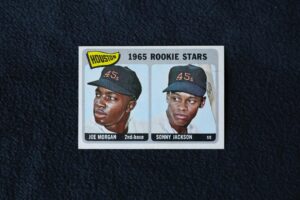Between 2020 and the beginning of 2023, Google searches for “best sports cards to buy right now” increased by 680% in the U.S. If you’re interested in selling your baseball cards, this is a great time to do it.
If you want to make money selling baseball cards, however, you need to have an idea of what yours are worth. There are many factors that affect baseball card value, so you’ll need to understand them before you start selling.
Looking for the best baseball card selling tips? Below we’ll look at seven key factors baseball card buyers consider.
1. Featured Player
One of the things that affects the value of a baseball card is the player. Cards that feature well-known athletes tend to sell for more than those featuring relatively unknown players.
If you have a card of Babe Ruth or Mickey Mantle, for example, it’s much more likely you’ll be able to get a high price for it. There are players in all eras who have stood out from the crowd a bit more than others and these players are usually of great interest to collectors.
When trying to sell a baseball card, carefully consider who’s on it. You may want to do some research on a player’s history if you’re trying to determine how much the card may be worth.
2. Historical Significance
It’s also important to consider the historical context of the card, outside of whether it features a famous player or not. Cards that represent special moments in baseball history are likely to be worth more than others. A World Series card or a card that commemorates a player breaking a record or making some other kind of achievement will generate extra interest and add to the rarity of the card.
It’s important to consider the context of the player as well as the card’s position in baseball history when determining how much sports card buyers will pay for it.
3. Card Condition
The condition of the card is also important to take into consideration, whether you’re selling a personal collection or selling sports cards as a business. A card that is tattered and torn is unlikely to sell for as much as one that is in mint condition. Whether the card features a star player or a relative unknown and whether the card is rare or not, the condition will make a big difference in its value.
Before selling, examine a card and see if there’s a lot of wear and tear or damage on it. One thing to look for is sharp corners – this will signify that the card hasn’t been handled as much.
Buyers want cards that are in great condition. Always keep this in mind when selling.
4. Professional Grading
Another important thing to consider is whether the baseball card has been graded by a professional or not. Graded baseball cards will have been appraised by a specialist who will accurately score their condition on a scale of 1 to 10, with 10 being the best quality. Selling graded cards is a simpler process than selling “raw” cards because buyers and sellers can agree to a price more easily.
With a raw, ungraded card, the buyer and seller will have to negotiate to determine the right price for the card and this can be much more challenging. If you’re selling an ungraded card, you’re likely to get less for it than if you had the card graded by a professional.
5. Rarity of the Card
The number of a particular card that has been printed will affect its value on the market. If it’s a very common card with lots of others just like it available, it will be worth less. Rare baseball cards with few others around will be worth more.
Some cards will have short print runs for one reason or another, and as a result, few similar cards exist today. Especially if it’s from an older decade, there will be fewer of the cards still around. These factors can greatly affect how much money you can make when selling a card to a motivated buyer.
6. Card Errors
One of the things that can contribute to a card’s rarity is a printing error. If there are printing errors on a card that were later corrected, it can add value to the card. This increases its rarity and uniqueness.
It can be a bit tough to identify whether a card you have has errors that could improve its value, but taking the time to do so is well worth it. Keep in mind that cards that have uncorrected errors won’t be as valuable or as rare. Only the version with the error will have been circulated, making it much more common.
7. Market Trends
When selling baseball cards, it’s important to be mindful of fluctuating market demand. Current collectible card market conditions can have a big impact on how much your old baseball cards are worth.
In some years, certain players will be more in demand than during other times. Cards from certain baseball eras may fluctuate in demand as well, so you’ll also need to take the year of the card into consideration.
It’s a good idea to stay on top of the collector’s market and to visit online collector forums to get in-depth insights into current market trends. These can change and fluctuate a lot as time goes on.
Preparing to Sell to Baseball Card Buyers
If you want to be prepared for baseball card buyers, you need to understand the key factors that they consider when purchasing a card. The featured player, card rarity, condition, and market trends will all play important roles in how much you’re able to sell a baseball card for.
If you want to have the easiest time selling your card collection while getting a reasonable price, get in touch with American Legends. Mark Rubin started American Legends in 1992 and has worked hard to build a reputation for fairness, integrity, and honesty with collectors and sellers.
Thinking about parting with your baseball card collection? Learn more about selling your collection to American Legends now.


